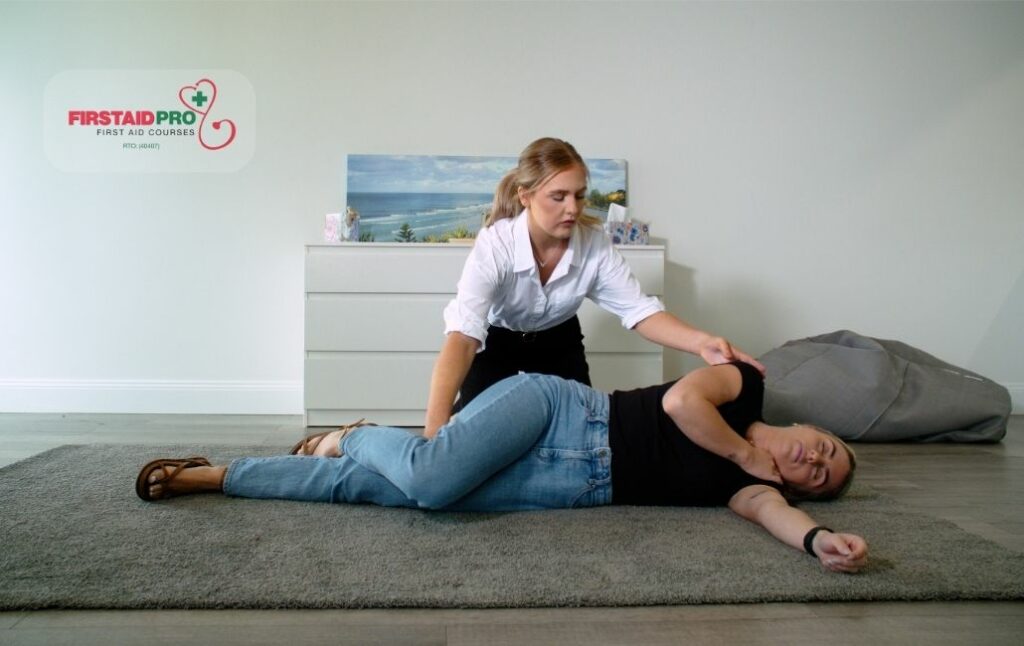Introduction
In emergencies, understanding how to perform CPR (Cardiopulmonary Resuscitation) can be the difference between life and fatality. Whether you're a layman or someone in the clinical field, comprehending the basics of mouth-to-mouth resuscitation is crucial. This extensive overview will stroll you with the needed actions and techniques needed for reliable mouth-to-mouth resuscitation, stressing its value in saving lives.
From understanding what CPR is to discovering the most up to date standards and methods, this overview aims to supply important understandings right into exactly how you can be prepared for emergency situations.

How to Do mouth-to-mouth resuscitation: A Novice's Overview to Life-Saving Techniques
CPR is a lifesaving method used in emergency situations when somebody's heart has actually quit beating or they have actually stopped breathing. Understanding exactly how to execute mouth-to-mouth resuscitation can https://zanderzmng102.timeforchangecounselling.com/bls-vs-als-when-to-require-advanced-life-support considerably raise the chances of survival until professional medical assistance arrives.
Understanding the Significance of CPR
Why is CPR Crucial?
The primary goal of doing CPR is to preserve blood flow and oxygenation to important body organs, especially the brain. When someone's heart stops, they might lose consciousness within seconds, and brain damage can occur within minutes without blood circulation. Hence, instant activity through mouth-to-mouth resuscitation can save a life.
Statistics on Survival Rates

According to various researches, immediate CPR can increase and even triple a sufferer's opportunity of survival. The American Heart Association reports that approximately 350,000 heart attacks take place outdoors health centers yearly in the USA alone.
Basic Components of CPR
1. Examining the Situation
Before you start carrying out CPR, guarantee it's risk-free for both you and the target. Look for indicators of responsiveness. If they're less competent and not breathing (or only wheezing), it's time to act.
2. Requiring Help
Call emergency situation services right away or ask somebody else to do so while you start providing care.

3. Beginning Upper Body Compressions
- Place your hands over the facility of the chest. Use your body weight to press down set at a rate of 100-120 compressions per minute. Ensure that each compression has to do with 2 inches deep but not more than 2.4 inches; this aids prevent wrong compression depth.
4. Giving Rescue Breaths (if educated)
If you're trained in rescue breaths:
- Give 30 chest compressions adhered to by 2 rescue breaths. Ensure each breath lasts about one second and makes the chest surge visibly.
Using an AED: Exactly How to Make use of It
An Automated External Defibrillator (AED) is an essential tool that can recover a typical heart rhythm throughout heart attack:
Turn on the AED. Follow audio/visual prompts. Attach pads as indicated on the device. Allow it to evaluate heart rhythm and adhere to directions accordingly. first aid perth cbdCPR for Different Age Groups
Understanding age-specific guidelines can make all the difference when carrying out mouth-to-mouth resuscitation:
Infant mouth-to-mouth resuscitation Technique
For babies under one year:
- Use 2 fingers for compressions in the center of their chest. Provide gentle puffs instead of strong breaths.
Child vs Grownup Techniques
For kids aged one year up till adolescence:
- Use one hand for compressions if required yet go for a deepness similar to adults.
Special Situations Needing Advanced Resuscitation Skills
Certain circumstances require sophisticated methods:
CPR for Drowning Victims
Drowning victims call for prompt rescue breaths before compressions as a result of prospective hypoxia.
Sports-related Cardiac Arrests
In athletic settings, know exactly how specific tasks present threats and adapt your method accordingly.
Workplace Emergency situation Strategies: Being Prepared at Work
Having an emergency situation action plan at the office can make sure everyone understands what actions to take throughout a crisis:
Conduct regular training sessions. Ensure ease of access of first aid packages and AEDs. Designate roles amongst employee for speedy emergency situation response.Household CPR Preparedness: Preparing Your Home for Emergencies
Having a plan in your home boosts your household's safety:
- Keep an updated checklist of emergency contacts near phones. Have a conveniently obtainable first aid set with fundamental supplies including gloves and masks.
Local mouth-to-mouth resuscitation Classes: Where Can You Obtain Certified?
Enrolling in neighborhood classes will certainly equip you with hands-on skills needed for reliable performance:
Check recreation center or medical facilities using courses. Look online for qualifications readily available in your area.Online CPR Qualification: Flexible Discovering Options
With technology at our fingertips, on the internet sources give versatility:
Courses are often readily available at any type of time. Make certain they comply with acknowledged requirements like those from Red Cross or AHA.CPR Accreditation Needs in Australia
Different regions have differing needs concerning qualification validity duration:
Typically legitimate for 3 years; check regional regulations. Regular refreshers are advised via continuing education courses.Latest Standards on Doing Mouth-to-mouth Resuscitation in Australia
Stay updated with existing practices endorsed by health and wellness authorities:
Review adjustments yearly by means of healthcare magazines or websites. Pay focus during re-certification courses as they reflect these updates.FAQ Section
What should I do if I'm unsure regarding supplying rescue breaths?
If you're awkward giving rescue breaths, emphasis solely on breast compressions till aid shows up; this is still extremely effective!
Can I utilize an AED on myself if I'm unconscious?
No! AEDs are developed for usage on others only; always look for assistance from somebody nearby if incapacitated.
What's the misconception bordering "mouth-to-mouth resuscitation constantly reactivates heart"?
It's vital to keep in mind that while lots of people believe this myth, most instances require more medical intervention past preliminary resuscitation efforts.
Are there particular guidelines based on age?
Yes! Standards vary dramatically in between grownups, kids, and infants; familiarize yourself with these age-specific protocols!
How often ought to I rejuvenate my skills?
It's a good idea to revisit training every two years or after substantial guideline updates from acknowledged companies like AHA Look at this website or Red Cross.
Is it legal to perform mouth-to-mouth resuscitation if I'm not certified?
Yes! Good Samaritan laws normally protect people who provide assistance throughout emergency situations as long as activities are affordable provided their degree of training!
Conclusion
Knowing just how to perform mouth-to-mouth resuscitation effectively can conserve lives-- your own consisted of! By understanding essential methods such as analyzing circumstances immediately making use of AED tools correctly while sticking strictly age-based procedures makes sure much better end results during emergencies!
Remember-- the extra prepared you are through training courses qualifications-- the greater impact you'll have when confronted with real-life situations! So do not wait-- enlist today!
In recap, whether you have an interest in taking neighborhood courses or seeking online certification chances-- there's no time at all like currently! Prepare yourself today due to the fact that every 2nd counts when it comes down conserving lives with proper application Cardiopulmonary Resuscitation techniques presented below throughout "How To Do Cpr: A Novice's Guide To Life-Saving Strategies."